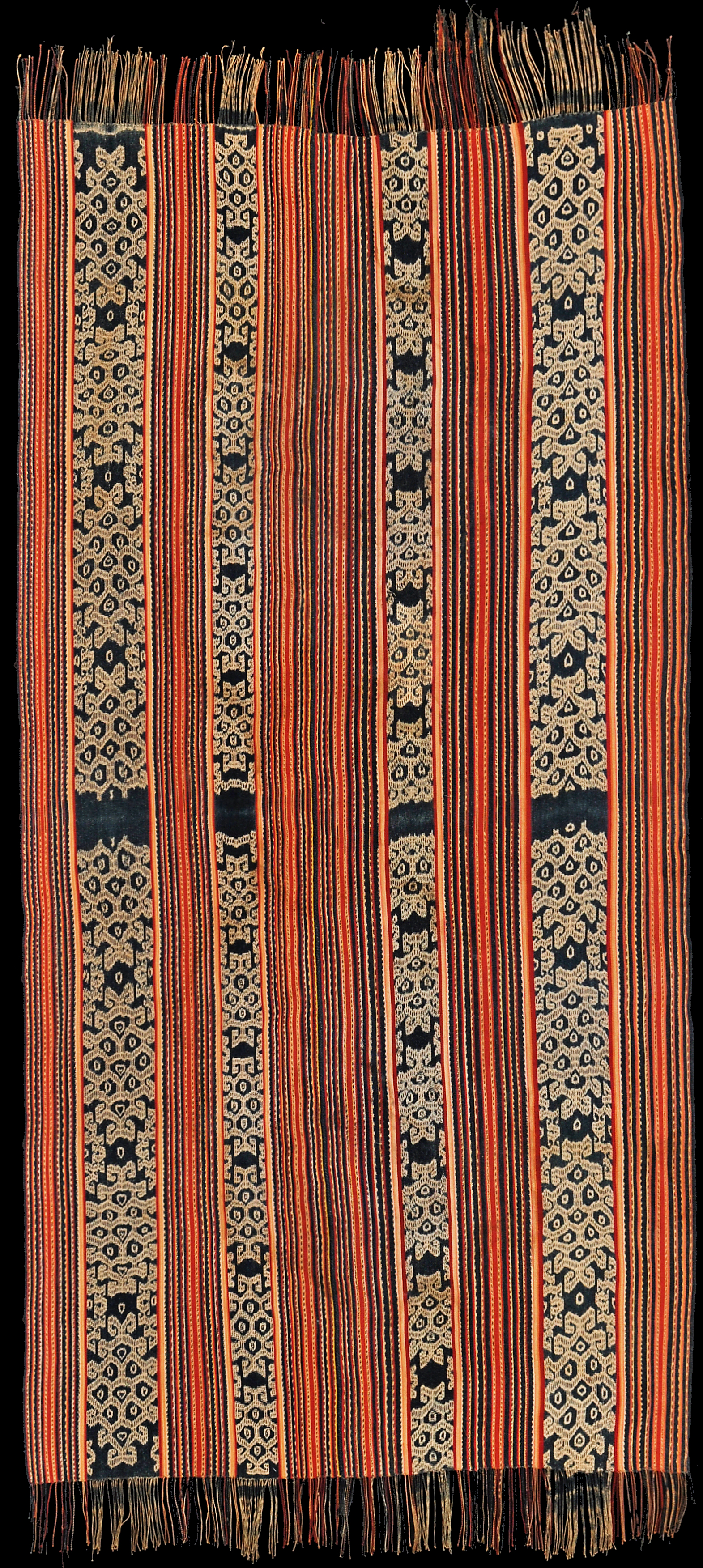| |
 mouse over to magnify mouse over to magnify
| | | | 256 Timor, East Timor
Beti naek (men's wrap)
| | Locale: | Ambenu (Ocousse), the East-Timorese exclave in West-Timor. Capital Pante Macassar or village in the lower elevations. Atoni people. | | Period: | 1920-1930 | | Panels: | 2 | | Design: | Beti naik (men's blanket in Dawan) decorated with wide bands of white on indigo ikat, alternated with stripes stipple-ikated also in white on indigo, and plain red, indigo, yellow, peach and sienna pinstripes, with a warm red overall tonality. The main motif, called pasubola, a variant of the traditional kaif, represents ancestral relationships. The Ambenu preference for asymmetry is manifest in the ikated bands, which are subtly distinct from each other, rather than copies made by warp doubling as is common across the border in neigbouring Amanuban Atoni territory. | | Size: | 103.5 x 210 cm (40.7 x 82.6 in) | | Weight: | 1005 g (462 g/m2) | | Yarn: | Cotton, hand-spun - plus pinstripes in commercial cotton | | Comment: | Substantial example of Atoni style, with excellent, clear ikat work according to Ambenu traditions. Main motif very similar on Amanuban motif in Bezemer, 'Indonesisch Kunstgewerbe, Fig. 42. A densely woven piece with weight and gravitas. While between the ikated bands done in hand-spun run pinstripes in triple-ply commercial yarn, there can be little doubt that this is an early 20th C cloth. Older than our Ambenu PC 002, which is done entirely in hand spun cotton. As hand spun cotton was still used in isolated Ambenu till roughly the early 1960s, the fact that this old cloth has commercial cotton pinstripes presumably indicates that it was made in a wealthy family that could afford such indulgences. Five tiny holes.
In deviation from the majority of Atoni cloths, this one must have a brother. Ikat here is always done with a doubled over warp bed so as to create two identical panels which are joined at the selvedges. In this case two different sets must have been made, of near-identical, but subtly different design, both in terms of motifs and the width of individual bands. | | Background: | Additional information in chapters on Timor and East Timor. | | Published: | Ikat Textiles of the Indonesian Archipelago, 2018
Timor: Totems and Tokens, 2019.
Ikat Textiles of Timor: Indonesian and Timor-Leste, 2025.
Ikat Textiles of Timor: Indonesian and Timor-Leste, 2025. | | Compare: | 002 | | Sources: | Very similar to beti naik from Taiboko village in Yeager and Jacobson, Textiles of Western Timor, Plate 194; very to rather similar to Fig. 149 and Plates 192, 193. See also Chapter 8.4.2.2. Very similar to Ambenu beti in Fundação Oriente, Povos de Timor, Povo de Timor, p. 23 Fig, 2. Also similar to our PC 002, but several decades older. | | |
 ©Peter ten Hoopen, 2025
All rights reserved.
|
|


